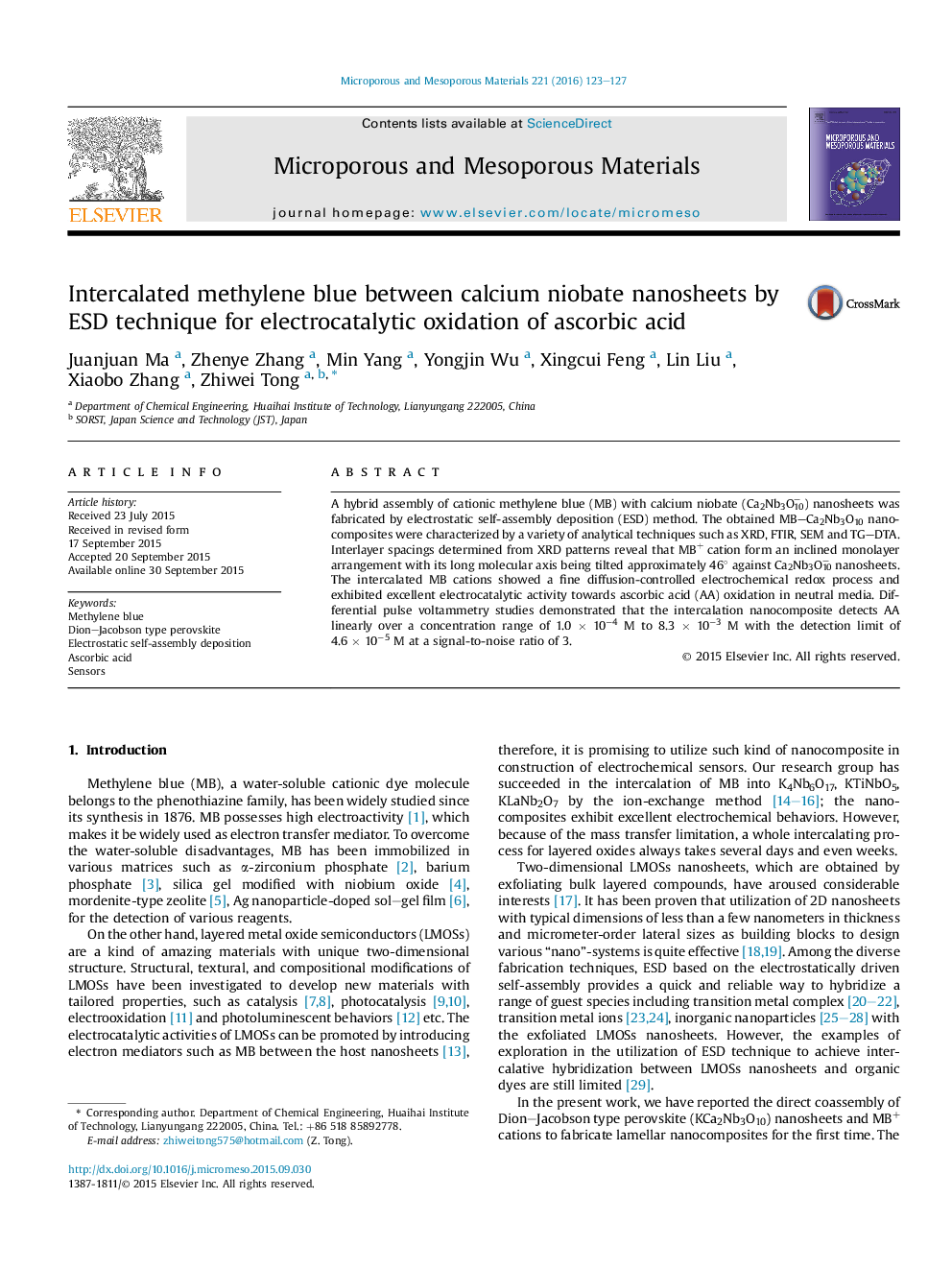| کد مقاله | کد نشریه | سال انتشار | مقاله انگلیسی | نسخه تمام متن |
|---|---|---|---|---|
| 72321 | 49017 | 2016 | 5 صفحه PDF | دانلود رایگان |
• MB cations have been inserted into the interlayer of calcium niobate by ESD method.
• Self-assembly between MB+ and Ca2Nb3O10– nanosheets can be finished in a few minutes.
• MB cations were found to be tilted about 46° against calcium niobate nanosheets.
• MB–Ca2Nb3O10 shows good electrocatalytic activity toward ascorbic acid oxidation.
A hybrid assembly of cationic methylene blue (MB) with calcium niobate (Ca2Nb3O10–) nanosheets was fabricated by electrostatic self-assembly deposition (ESD) method. The obtained MB–Ca2Nb3O10 nanocomposites were characterized by a variety of analytical techniques such as XRD, FTIR, SEM and TG–DTA. Interlayer spacings determined from XRD patterns reveal that MB+ cation form an inclined monolayer arrangement with its long molecular axis being tilted approximately 46° against Ca2Nb3O10– nanosheets. The intercalated MB cations showed a fine diffusion-controlled electrochemical redox process and exhibited excellent electrocatalytic activity towards ascorbic acid (AA) oxidation in neutral media. Differential pulse voltammetry studies demonstrated that the intercalation nanocomposite detects AA linearly over a concentration range of 1.0 × 10−4 M to 8.3 × 10−3 M with the detection limit of 4.6 × 10−5 M at a signal-to-noise ratio of 3.
Figure optionsDownload as PowerPoint slide
Journal: Microporous and Mesoporous Materials - Volume 221, February 2016, Pages 123–127
